BALACLAVA – LISA’s (BLACKPINK) UNIQUE FASHION ACCESSORY SETTING TRENDS
Thanks to its excellent thermal properties, the balaclava continues to make waves in the coordinated outfits of famous “IT-Girls.”
The balaclava was once considered a somewhat “intimidating” fashion accessory with its design that completely covers the head, often associated with the images of villains, thieves, and even terrorists. However, the standout feature of this item lies in its combination of the warmth of a knitted hat with the ability to keep the neck warm, all in a single piece. As the weather turns cold in the last months of the year, the balaclava becomes a crucial foundational layer, helping fashion enthusiasts stay comfortably warm, whether they are adventuring in the Arctic or simply cycling or jogging in the chilly wind. Currently, this hat style is a staple in the fashionable ensembles of trendsetting individuals whenever they hit the streets.
Unveiling the Mystique of Balaclava: From War Zones to Runways
Balaclava, also known as “Balaclava helmet” or “Ski mask,” is a headgear designed to cover the face and head, offering protection against harsh weather conditions and cold temperatures. The term “Balaclava” originates from the Crimean War (1854-1856), where soldiers from the French, British, and Turkish alliances faced frigid temperatures and biting winds in the Balaclava region of Ukraine (now the Crimean Peninsula). To shield their faces and heads from the cold, they ingeniously crafted hoods resembling elongated caps or made from thick fabric, often created by women on the home front. Gradually, the name “Balaclava” became synonymous with this protective accessory.
As the years passed, the Balaclava evolved and gained popularity, especially after World War II. During this era, Balaclavas were produced to cater to the adventurous needs of winter sports enthusiasts, including skiers, snowboarders, and motorcycle riders. The design and materials were improved to provide warmth, comfort, and enhanced facial protection for users facing extreme conditions.

Beyond its functional use in sports, the Balaclava took on a symbolic role for various military forces and became a favorite among activists participating in rebellions or as a disguise for those involved in criminal activities. In 1994, during the political uprising of the Zapatistas in Chiapas, Mexico, Balaclavas were used to symbolize a unified group, emphasizing equality. Similarly, the artistic group Pussy Riot adorned colorful Balaclavas to conceal their identities while advocating for women’s rights and LGBTQIA+ equality in the human rights struggle in Russia. Due to its ability to provide anonymity, the Balaclava became a go-to accessory for bank robbers and terrorist organizations seeking to conceal their identities.
In the world of fashion, the Balaclava has transcended its utilitarian origins. Renowned for its insulation properties, it has become a statement piece for “IT-Girls” and celebrities, adding an element of intrigue to winter outfits. From war zones to runways, the Balaclava continues to captivate, embodying a rich history and a versatile aesthetic that transcends its humble beginnings.
Balaclava and UK Drill: A Fusion of Fashion and Hip-Hop Culture
Balaclavas, once solely associated with protection against the elements, have found a unique place not only in fashion but also in the broader spectrum of Hip-hop culture, particularly within the UK Drill scene. Renowned artists representing UK Drill, such as Headie One, Central Cee, and SL, often make public appearances with their faces concealed by a Balaclava. But what drives this trend? The reasons may be multifaceted, and one aspect could be to safeguard their identity from the public and the media. By obscuring their faces, artists create an air of mystery and unpredictability, intriguing fans and catching the attention of the press. This deliberate act of covering one’s face adds an enigmatic quality, contributing to the allure and mystique of these musicians.

In the realm of UK Drill, a subgenre of Hip-hop characterized by its distinctive beats and raw lyrical content, the use of Balaclavas serves as a symbol of anonymity and rebellion. The genre emerged from the streets of London, reflecting the harsh realities and struggles faced by the youth in the city. The Balaclava becomes a statement piece, embodying the defiance and resilience of these artists against societal norms.
Moreover, the incorporation of Balaclavas into the visual identity of UK Drill artists aligns with the rebellious nature of the genre. It creates a visual aesthetic that goes beyond the music itself, making a bold statement and challenging conventions. The artists’ choice to conceal their faces becomes an integral part of their branding, amplifying their enigmatic personas.
The trend of donning Balaclavas in UK Drill not only adds a layer of secrecy but also amplifies the edginess and authenticity of the artists. It becomes a powerful visual element that complements the gritty narratives of their music, showcasing a fusion of fashion and cultural expression within the dynamic landscape of Hip-hop. As the UK Drill scene continues to evolve, the Balaclava remains a potent symbol, embodying the spirit of rebellion and pushing the boundaries of artistic expression.
Balaclava in Fashion: Navigating Sensitivity and Style
Despite its sensitive connotations tied to warfare, terrorism, and rebellious events, the Balaclava has managed to make its mark on the fashion landscape through the hands of daring designers. One notable example is the controversial Spring/Summer 2002 collection by Raf Simons. Unveiled just under a year after the tragic events of 9/11, the Belgian designer presented a collection that stirred debates. Simons showcased oversized garments and headgear directly inspired by the Balaclava. Immediately, the public drew associations between the masks and members of extremist Islamic organizations, prompting criticism toward Raf Simons.

Raf Simons Spring 2002
In response to the public backlash, Raf Simons defended his artistic choices by sharing his perspective. In his eyes, terrorism exists in our surroundings, constantly attempting to conceal identities behind masks. He urged people to confront their fears, acknowledging the eerie reality that inspired his collection.
The controversy surrounding Raf Simons’ SS/2002 collection highlights the fine line that fashion often treads between artistic expression and societal sensitivities. The Balaclava, once a utilitarian accessory, becomes a symbol of rebellion and a tool for designers to challenge norms and provoke thought.
The incident also raises questions about the role of fashion in reflecting and responding to the broader sociopolitical landscape. Can fashion push boundaries without inadvertently perpetuating stereotypes or causing discomfort? Raf Simons, intentional or not, sparked a conversation about the intersection of fashion, identity, and societal fears.
In the world of fashion, where self-expression and pushing boundaries are celebrated, designers continuously grapple with the responsibility that comes with their creative freedom. The Balaclava, with its complex history and multifaceted symbolism, serves as a reminder that fashion is not only about aesthetics but also a powerful medium for social commentary and dialogue. As designers navigate the delicate balance between expression and sensitivity, the Balaclava remains a potent symbol of the challenges and possibilities within the realm of fashion.
Balaclava in Winter Fashion: Celebrities’ Street Style
Lisa from BLACKPINK roams the streets of Seongsu-dong in a winter-ready ensemble, featuring a balaclava-coordinated coat. The balaclava, covering more than half of your face, is an ideal accessory when you prefer to keep a low profile. Fashion enthusiasts can complete their edgy and unique looks with this headgear that combines practicality and style. Paired with a knitted hoodie, it adds a touch of flair to any street-ready outfit.
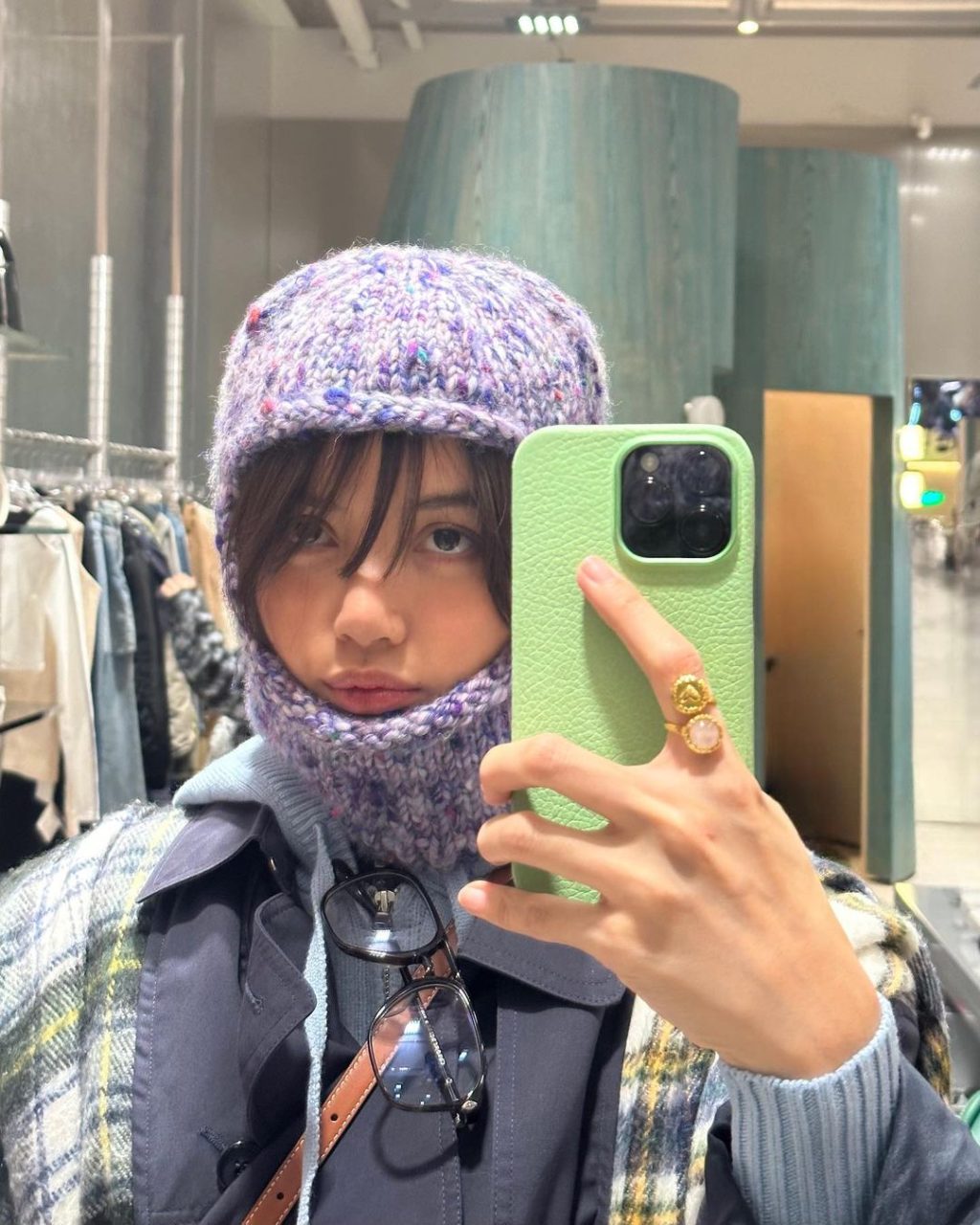
Photo: @lalalalisa_m
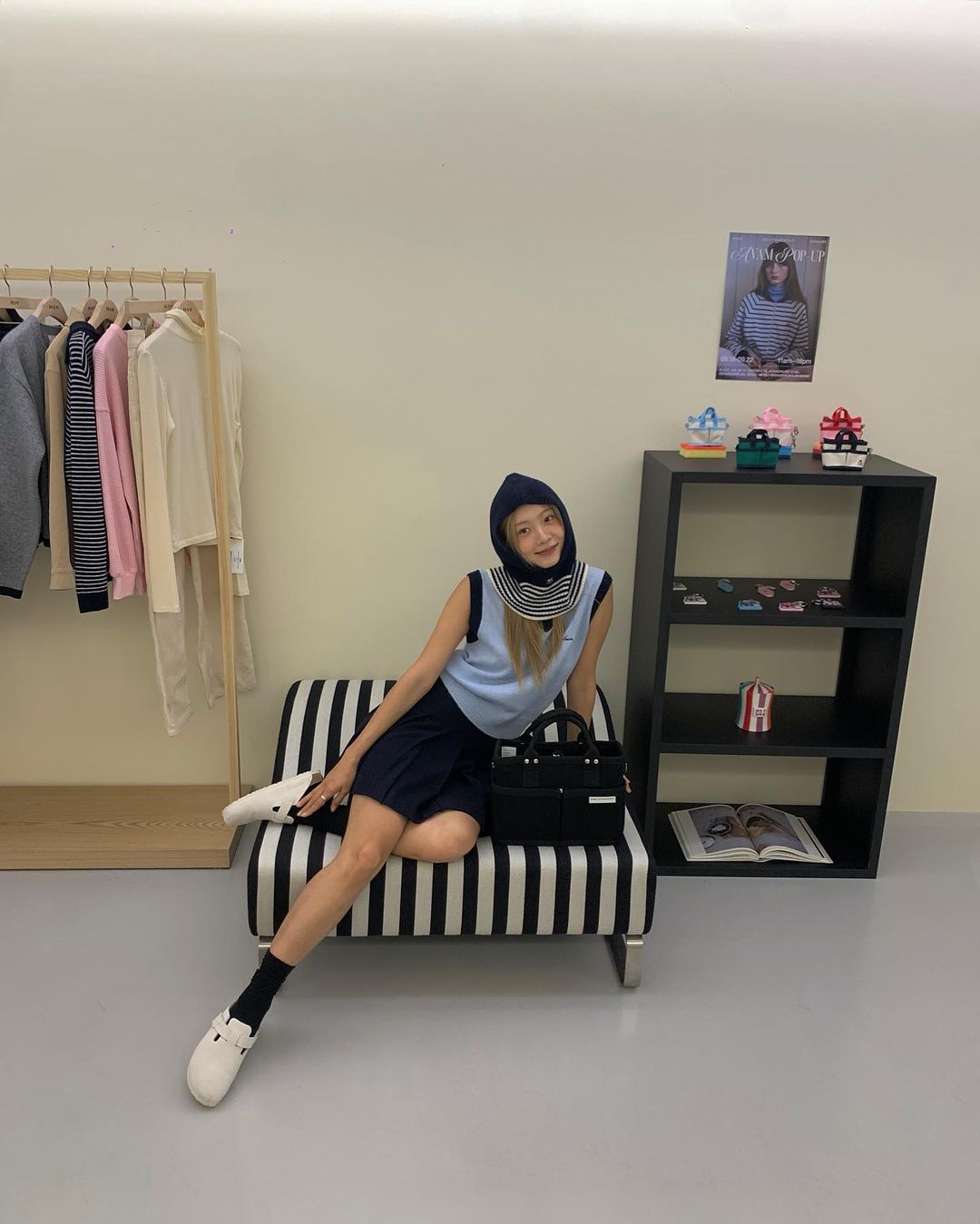
Photo: @j678my
When facing the biting cold, the balaclava proves to be a fitting choice for winter travel fashion. This versatile accessory shines as a must-have in the winter accessory wardrobe, especially for engaging in winter sports like snowboarding. Andrea showcases a winter look with a knitted sweater, one-piece snowsuit, white snow boots, and a green bag as a stylish accent. Kim Na-young opts for a cozy ensemble with a Christmas-inspired knitted sweater, padded pants, and a head-covering hat. To enhance the overall style, she adds a pair of sunglasses for eye protection.

Photo:@tineandreaa
Jennie, the embodiment of “Chanel living” in everyday life, gravitates towards comfortable and simple outfits. She hits the streets in a dark padded coat and a vibrant blue balaclava. Many stars embrace the balaclava not only for its fashion statement but also for its practicality in concealing their identities. Starting with simple black designs, this accessory has become a streetwear staple, endorsed by various luxury brands.
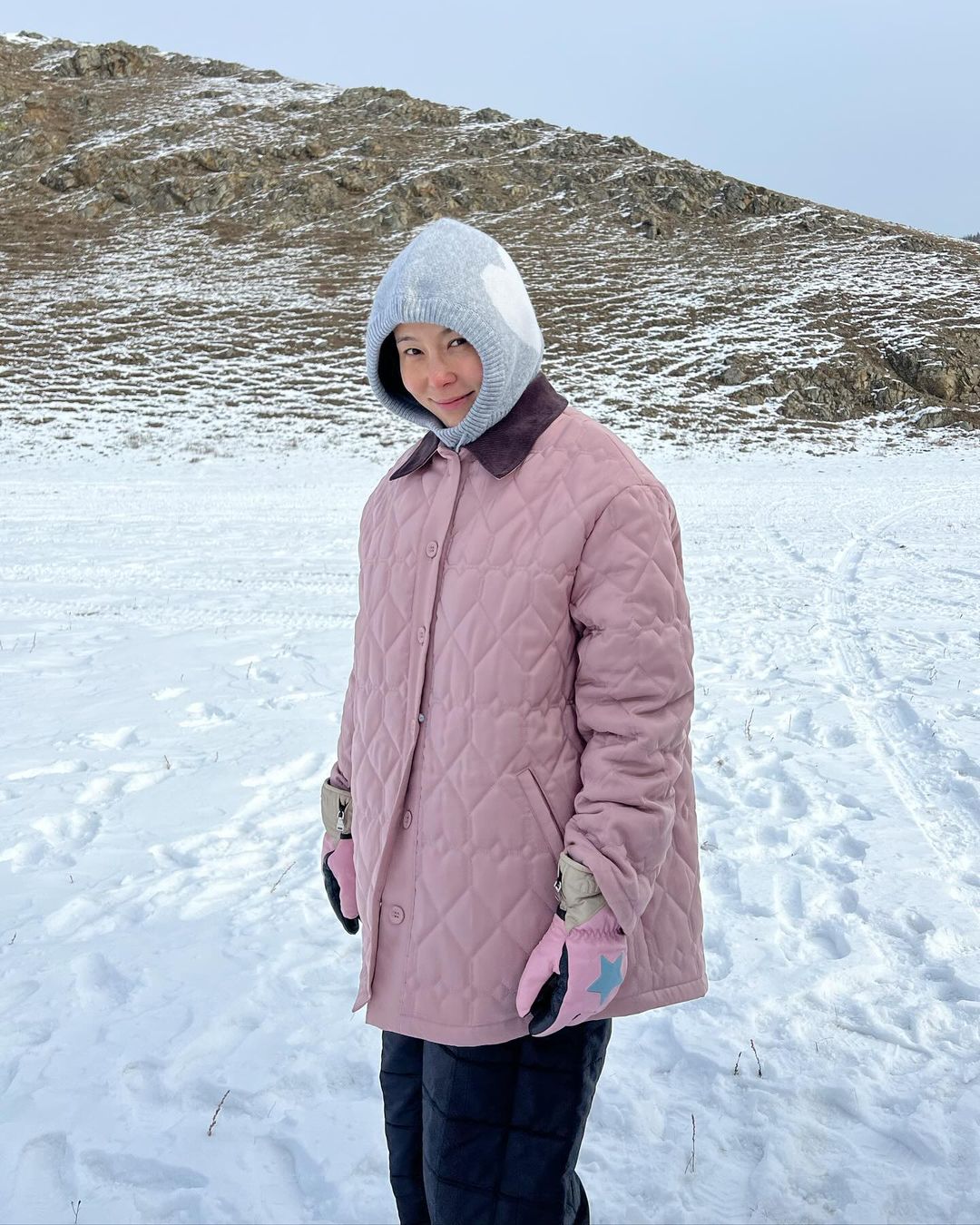
Photo:@nayoungkeem
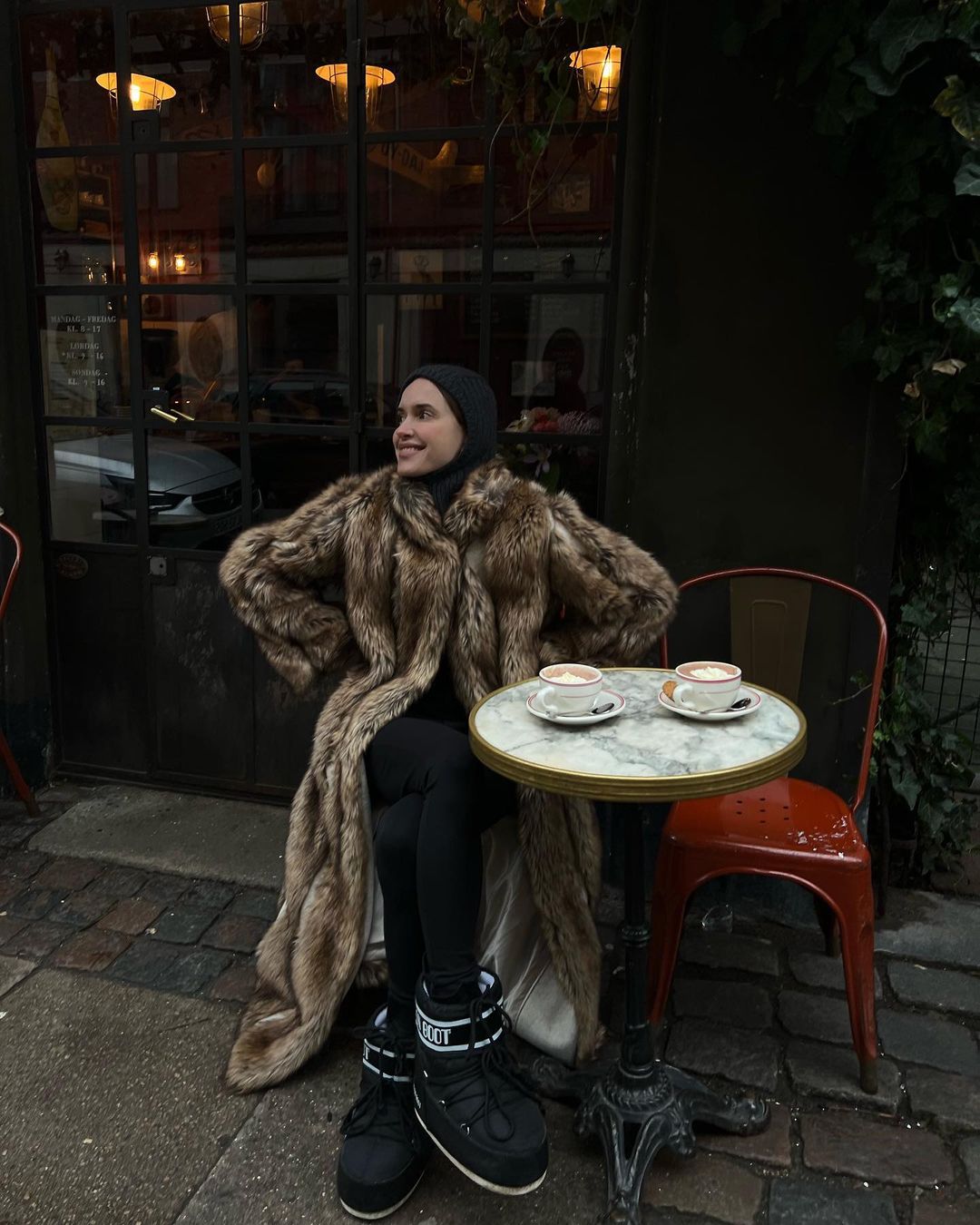
Photo:@pernilleteisbaek
Pernille Theisbaek surprises with a “shadowed” hairstyle under the balaclava. In a winter fashion collection exclusive, the balaclava becomes an essential piece. Pernille wears a long furry coat, a head-covering hat, and even moon boots. Who would have thought of pairing green rubber boots with a balaclava? Bae Doo-na, strolling in Gangjin, dons a knitted sweater, denim jeans, and a standout balaclava, creating a bold and unconventional style that It-girls aspire to conquer.
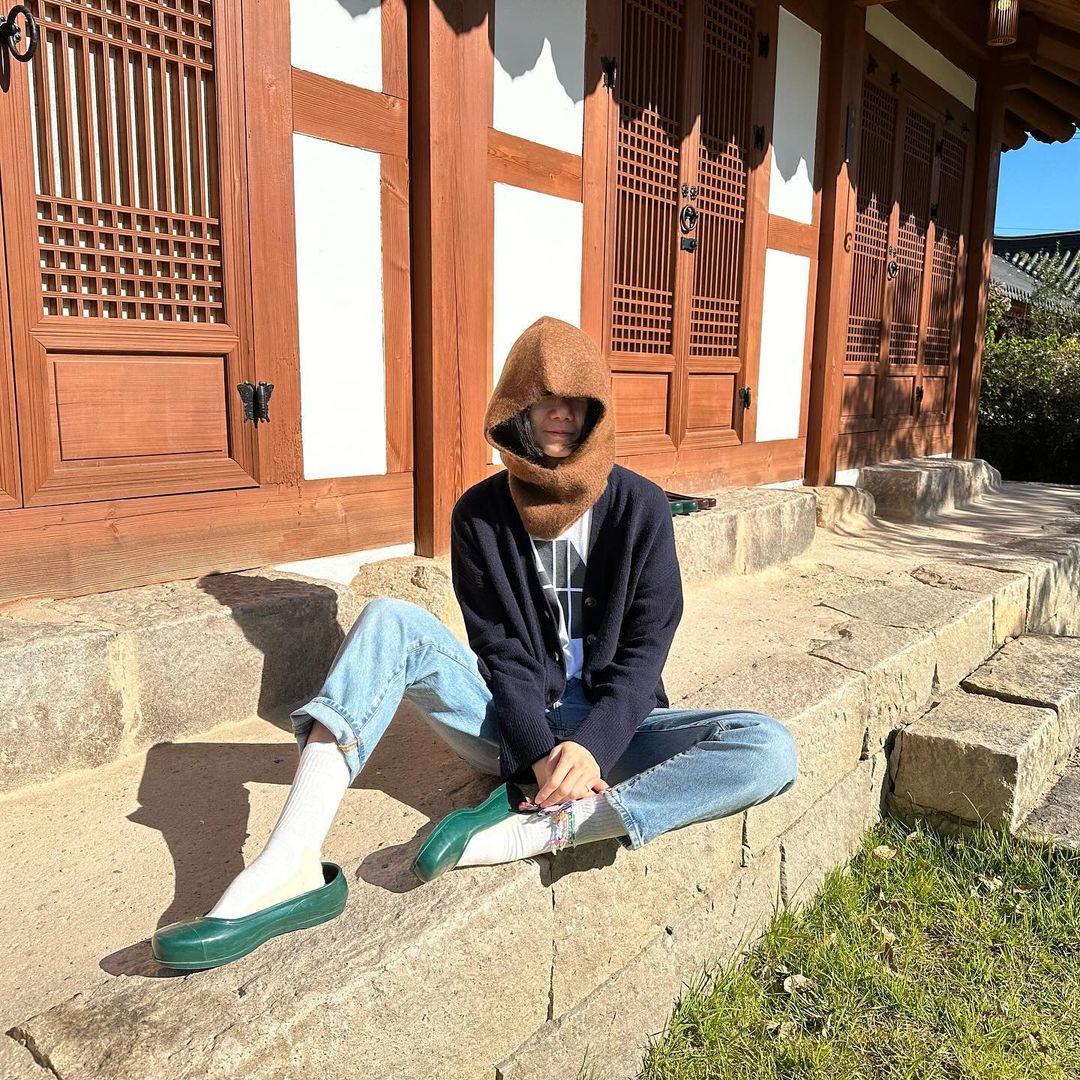
Photo:@doonbae
In the world of winter fashion, the balaclava emerges as more than just a cold-weather accessory; it becomes a statement piece embraced by celebrities, adding a touch of mystery and individuality to their winter street styles.
